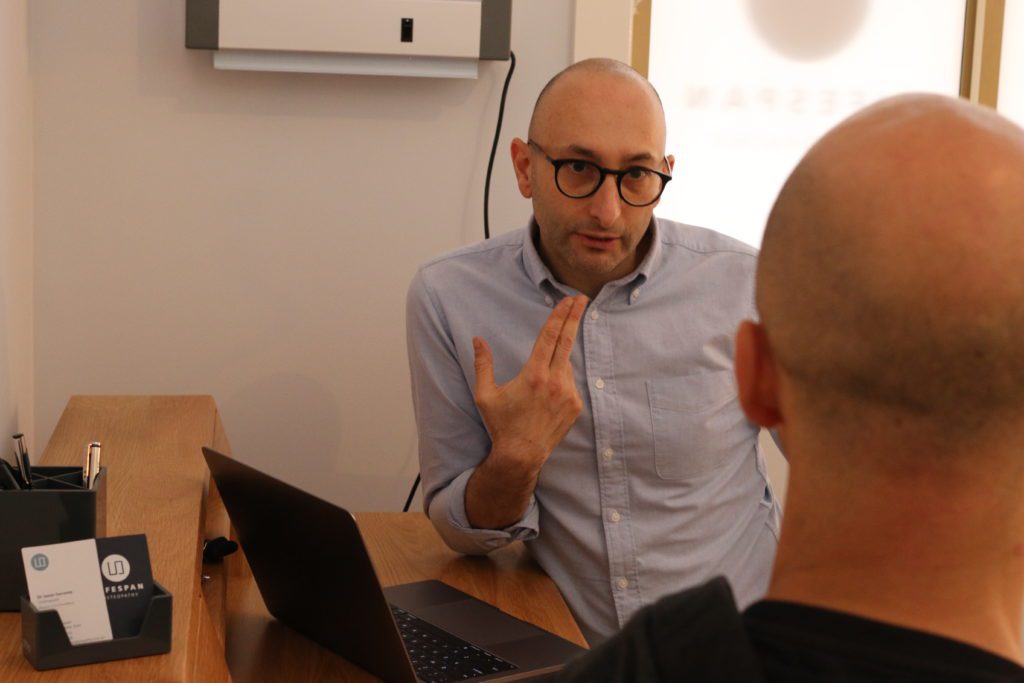Mindfulness and Pain: What’s the Connection?
When you’re in pain, especially if it’s been going on for a while, it can feel like it takes over every part of your day.
And while hands-on treatment and movement therapy can make a real difference, there’s another tool we love recommending—one that’s simple, research-backed, and easy to try at home.
It’s mindfulness.
And it might help you change the way you experience pain.

What Is Mindfulness, Really?
At its heart, mindfulness is about paying attention—on purpose and without judgement—to what’s happening in your body, your breath, or your surroundings, right now.
You don’t need incense, meditation cushions, or hours of free time.
You just need a few moments and a willingness to slow down and check in.
The Brain, Pain and Mindfulness
Your brain plays a huge role in how you feel pain.
That’s not to say the pain is “in your head”—but rather that your brain processes pain signals based on many inputs, including stress levels, sleep, fear, and attention.
Mindfulness helps by:
- Calming the nervous system: When we’re stressed or anxious, the body is more sensitive to pain. Mindfulness can help switch off that “fight or flight” response.
- Changing pain perception: Studies show that mindfulness meditation can reduce activity in brain areas associated with pain processing.
- Improving coping: When we’re less reactive to pain, we often feel more in control—and that can be empowering.
Related: 10 Ways Mental Health and Pain are Connected
4 Simple Mindfulness Practices for Pain
These techniques don’t need to take long and can be adjusted to suit your body and schedule.
🧘♀️ 1. Mindful Breathing
Inhale for 4 seconds, hold for 4, and exhale for 6. Focus only on your breath. This calms the vagus nerve and can reduce nervous system arousal.
🛏️ 2. Body Scan Before Bed
Lie down comfortably. Bring attention to your feet, then slowly move your awareness up through the body. No need to change anything—just notice.
Related: Improve Your Sleep and Reduce Pain: How to Choose the Right Mattress
🧠 3. “Name It to Tame It”
Noticing strong sensations or emotions? Try silently naming them—“tightness”, “frustration”, “burning”. This can reduce their intensity.
🌿 4. Grounding with 5-4-3-2-1
Feeling overwhelmed?
Notice:
- 5 things you can see
- 4 you can feel
- 3 you can hear
- 2 you can smell
- 1 you can taste
This can shift your focus from pain to presence.

How We Integrate This in Our Clinic
At Lifespan Osteopathy, we believe that managing pain means looking at the whole person—not just the painful body part.
Mindfulness is one of the tools we may suggest to complement your recovery journey. It doesn’t replace treatment, but it often enhances it.
Ask your osteopath how it might work for you.
Mindfulness and Pain FAQ’s:
Can mindfulness really reduce pain?
Yes.
Research shows that mindfulness practices can reduce activity in areas of the brain associated with pain perception.
It won’t cure the cause of the pain, but it can help you respond to it in a calmer, more manageable way.
Do I need to practice Mindfulness every day for it to work?
Even a few minutes a day can make a difference. You don’t need to be perfect or follow a strict routine—consistency over time is what counts.
Is this something you can help me with at the clinic?
Absolutely.
We can help you learn and adapt these techniques in a way that suits your body and lifestyle, and we often integrate them into your broader care plan.
You’re Not Alone
Whether you’re brand new to mindfulness or already dabbling in it, we’re here to help you figure out what works best for you.
Everyone’s pain journey is different, and what helps one person might look totally different for someone else.
You don’t have to go it alone. We’re here to guide, support, and personalise your care.
👉 Want to learn more or try these practices with guidance?
Ask your osteopath at your next visit, or contact us to find out more.

